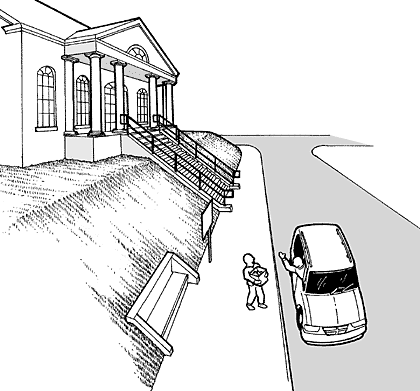Example
The town library is a historic structure that is listed on the State historic register. The two entrances to the facility each have four steps and no accessible entrance is provided. The town consults with an architect to determine if an accessible entrance can be provided and is told that a ramp or lift cannot be added to either entrance without a significant change to the exterior of the building. After reviewing the ADA requirements, the town learns that qualified historic buildings and facilities are not required to take any action that would threaten or destroy the historic significance of a historic property. The State historic preservation office is consulted and it determines that the exterior cannot be modified. Because physical modifications to the entrances cannot be made, the town changes its policies and provides access to the library services in an “alternate manner” upon request. Library staff are trained to take requests over the telephone, to look up information for individuals with disabilities who cannot use the library, to provide information over the telephone, and to provide curbside service for books and library publications or to mail items to individuals upon request. Library staff may also meet with an individual in another accessible location when the telephone service is not effective. The library publicizes a telephone number for requesting these alternate services in its publications and announcements.

Library staff provide curbside services because the library facility cannot be made accessible.

User Comments/Questions
Add Comment/Question